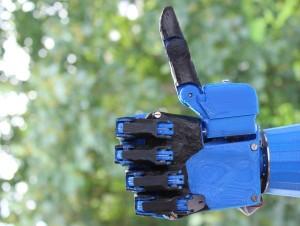There has been so many innovative new applications for 3D printing within the medical field. We have seen dozens of different types of 3D printed implants, a huge number of 3D rinted prosthetic devices, and all sorts of  ways in which 3D printing is changing the face of medicine for the better.
ways in which 3D printing is changing the face of medicine for the better.
As we move into the next three to four years, there will likely be major medical advances which will utilize 3D printing to an even greater extent. As this occurs, it is very likely that innovation may be stifled as regulations take hold, and those overseeing the technology’s uses move at a snail’s pace.
The Food and Drug Administration (FDA) will certainly play a major role in the future uses of 3D printing within the field of medicine. It is supposedly their duty to advance the public’s health by helping to speed innovations that make medicines more effective, safer, and more affordable. In a perfect world, that may be the case, however, if you ask many within the medical field, their opinion of the FDA, they would likely use words which the editors of 3DPrint.com would certainly remove from this article.
With that said, the FDA realizes that emerging technologies could wind up being their Achilles’ heel. Those within the administration need to have a keen understanding about these new technologies so that they can make sound judgement calls when that time comes.
Back in 2011, the FDA announced their Experimental Learning Program (ELP), which was formally launched in April of 2013. The idea behind the program is to teach those within the agency about certain new technologies, by allowing them to attend industry sites of companies which volunteer their services, thus allowing the FDA officials to learn about these technologies. The original purpose of the ELP, according to the FDA was to “help new medical  device reviewers understand the challenges of technology development and the impact of medical devices on patient care.”
device reviewers understand the challenges of technology development and the impact of medical devices on patient care.”
Just yesterday, the FDA stated that it plans to launch a “new component” of the ELP, extending the program further, in the hopes of providing the Center for Devices and Radiological Health (CDRH) staff with “the policies, laboratory practices, and challenges faced in broader disciplines that impact the device development life cycle.”
In doing so, they hope to speed up the pre-market review process of medical devices and focus on several new areas of interest. One of these areas is that of 3D printing/additive manufacturing. The FDA is planning a meeting on the subject of 3D printing in two months, and plans to release a guidance, detailing what and how they will regulate the industry, sometime in 2015. Whether they will focus on the machines which are fabricating possible medical devices and implants, or only on the devices and implants themselves, has yet to be seen, however, it should be detailed in next year’s guidance.
Let’s here your thoughts on what the FDA’s role should be within the medical field in respect to 3D printing. Discuss in the FDA/3D Printing forum thread on 3DPB.com.
[Source: FederalRegister.gov] [Image: xilloc.com]
Subscribe to Our Email Newsletter
Stay up-to-date on all the latest news from the 3D printing industry and receive information and offers from third party vendors.
Print Services
Upload your 3D Models and get them printed quickly and efficiently.
You May Also Like
3D Printing News Briefs, July 2, 2025: Copper Alloys, Defense Manufacturing, & More
We’re starting off with metals in today’s 3D Printing News Briefs, as Farsoon has unveiled a large-scale AM solution for copper alloys, and Meltio used its wire-laser metal solution to...
3DPOD 260: John Hart on VulcanForms, MIT, Desktop Metal and More
John Hart is a Professor at MIT; he´s also the director of the Laboratory for Manufacturing and Productivity as well as the director of the Center for Advanced Production Technologies....
3D Printing News Briefs, June 28, 2025: Defense Accelerator, Surgical Models, & More
In this weekend’s 3D Printing News Briefs, 3YOURMIND was selected to join an EU Defense Accelerator, and PTC has announced model-based definition (MBD) capabilities within Onshape. Finally, a study out...
EOS in India: AM’s Rising Star
EOS is doubling down on India. With a growing base of aerospace startups, new government policies, and a massive engineering workforce, India is quickly becoming one of the most important...


































